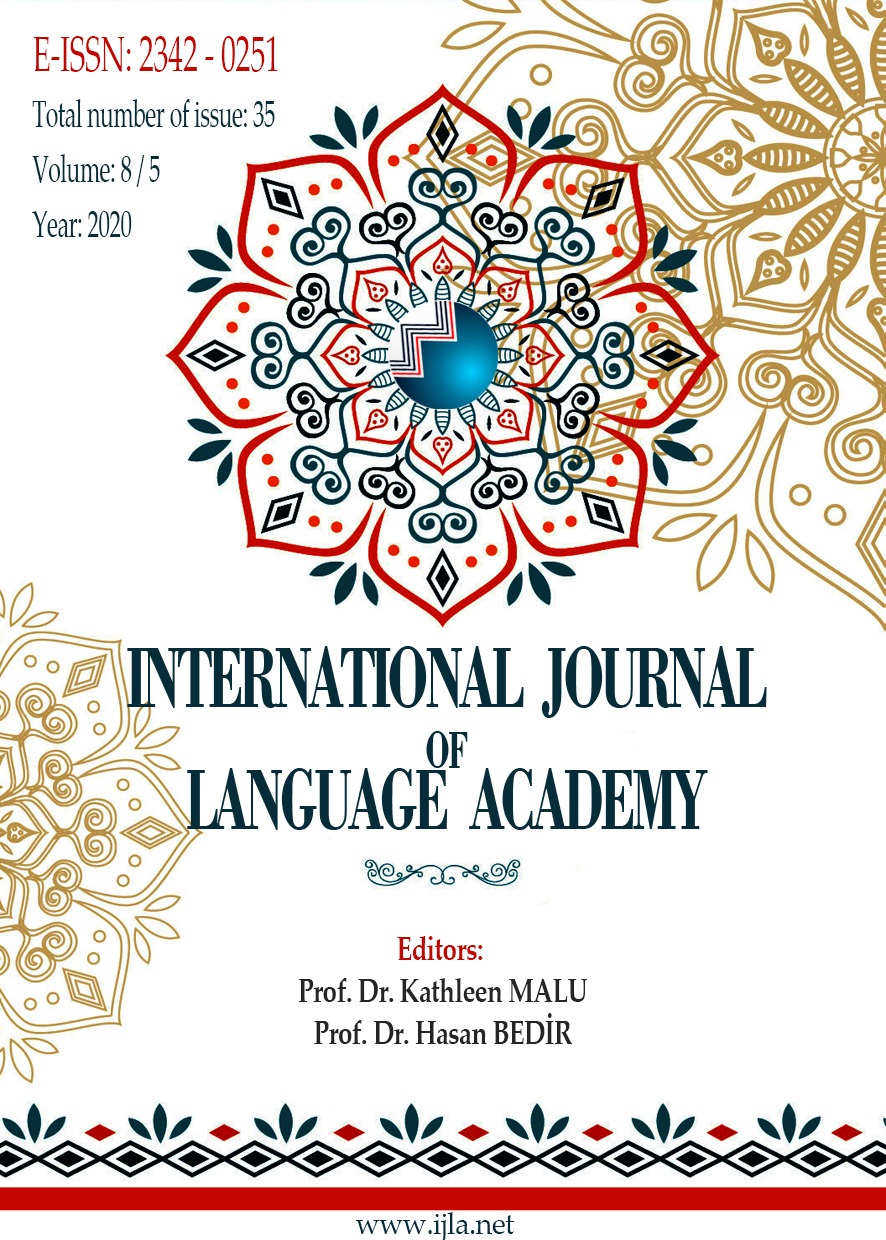A DECONSTRUCTIVE READING OF ROBERT BROWNING’S POEMS, “PORPHYRIA’S LOVER,” “THE LABORATORY, ” AND “ONE WAY OF LOVE”
Author :
Abstract
The approach to binary oppositions has long been evaluated in terms of the superiority or the inferiority of one of the concepts. In this respect, binary oppositions such as man/woman, reason/emotion, white/black, presence/absence, speech/writing, human/animal, culture/nature and the West/the East and dichotomous thinking have played a pivotal role in our perception of the world for a long time. However, deconstruction challenges this dichotomous approach, as it draws close attention to the controversial nature of such a dualistic outlook by highlighting the need to analyze numerous potential interpretations. A deconstructive reading can therefore reveal potential alternative explicit and implicit meanings in the literal and connotative sense. This study will, in this regard, present a brief insight into deconstruction, a school of literary criticism, and then render a detailed deconstructive reading of Robert Browning’s poems, “Porphyria’s Lover”, “The Laboratory,” and “One Way of Love.” This deconstructive reading will be conducted through specific references from these three selected poems and the relevant secondary sources in order to demonstrate how Browning challenges the traditionally established structure of such binaries. The ultimate aim will then be to illustrate the possibility of alternative multiple interpretations and to manifest the need for the formation of a non-binary future
Keywords
Abstract
The approach to binary oppositions has long been evaluated in terms of the superiority or the inferiority of one of the concepts. In this respect, binary oppositions such as man/woman, reason/emotion, white/black, presence/absence, speech/writing, human/animal, culture/nature and the West/the East and dichotomous thinking have played a pivotal role in our perception of the world for a long time. However, deconstruction challenges this dichotomous approach, as it draws close attention to the controversial nature of such a dualistic outlook by highlighting the need to analyze numerous potential interpretations. A deconstructive reading can therefore reveal potential alternative explicit and implicit meanings in the literal and connotative sense. This study will, in this regard, present a brief insight into deconstruction, a school of literary criticism, and then render a detailed deconstructive reading of Robert Browning’s poems, “Porphyria’s Lover”, “The Laboratory,” and “One Way of Love.” This deconstructive reading will be conducted through specific references from these three selected poems and the relevant secondary sources in order to demonstrate how Browning challenges the traditionally established structure of such binaries. The ultimate aim will then be to illustrate the possibility of alternative multiple interpretations and to manifest the need for the formation of a non-binary future
Keywords
- Balkin, J. M. (2010). Deconstruction. D. Patterson (Ed.), A Companion to philosophy of law and legal theory (pp. 361-367). Oxford: Wiley-Blackwell.
- Bergman, D. (1980). Browning’s monologues and the development of the Soul. ELH, 47(4), 772-787.
- Browning, R. (1979). The Laboratory. J. F. Loucks (Ed.), Robert Browning's poetry. New York & London: Norton.
- Browning, R. (1979). Porphyria’s Lover. J. F. Loucks (Ed.), Robert Browning's poetry. New
- Browning, R. (1979). One Way of Love. J. F. Loucks (Ed.), Robert Browning's poetry. New
- Derrida, J. (1982). Margins of philosophy. Chicago: Chicago University Press.
- Derrida, J. (1985). Structure, sign and play in the discourse of the human sciences. A. L. Seoul (Ed.), Critical theory since 1965. Florida: Florida UP.
- Hawlin, S. (2002). The complete critical guide to Robert Browning. London: Routledge.
- Jacobs, W. D. (1952). Browning’s Porphyria’s Lover. The news bulletin of the rocky mountain modern language association, 5(2), 8-8.
- Roberts, A. (1996). Robert Browning revisited. New York: Twayne Publishers.
- Sutton, M. K. (1969). Language as defense in Porphyria’s Lover. College English, 31(3), 280- 89.
- Tyson, L. (2006) Critical theory today: A user-friendly guide. New York & London: Routledge.





